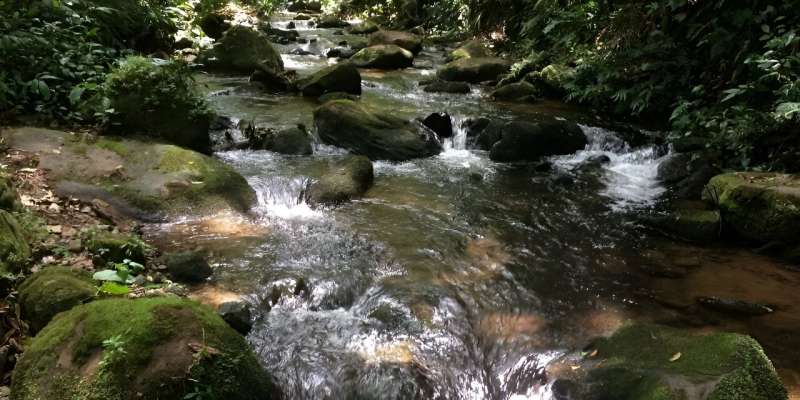This article has been reviewed according to Science X's editorial process and policies. Editors have highlighted the following attributes while ensuring the content's credibility:
fact-checked
trusted source
proofread
Urbanization has led some Costa Rican water sources to exceed safety levels: Study

Four decades of changes in land use in central Costa Rica have increased nitrate concentrations in drinking water, in some areas to potentially unsafe levels, according to a new study led by a University of Texas at Arlington scientist.
"Land use has changed dramatically in the past four decades in Costa Rica," said Ricardo Sánchez-Murillo, associate professor of Earth and environmental sciences. "Many areas have changed from forested and pasture areas and coffee plantations to urban developments, taking away green spaces. Together, these changes have altered the nitrate compositions in the groundwater."
Published in the Journal of Geophysical Research: Biogeosciences, the study by Sánchez-Murillo and colleagues from Universidad Nacional and Empresa de Servicios Públicos de Heredia, both in Costa Rica, analyzed different water sources to see how they were affected by changes in land use since the 1980s.
Specifically, researchers took water samples at various depths from springs, wells, rivers and wastewater plants, as well as in varying topographies, such as lowlands, midlevel areas and near volcanoes. In each water sample, they examined nitrate isotopes, which are unique, allowing the team to trace the water sample back to where it originated. While areas of higher elevation did not show problems with nitrate levels in the water, mid- and low-elevation areas exhibited greater nitrate concentrations, with some areas showing unsafe levels.
Nitrates can be produced naturally in tropical forested soils. They also are a common byproduct of human-made products such as soil fertilizers and sewage systems, as well as animal waste from commercial facilities.
High nitrate levels can affect how the blood carries oxygen to cells. Too much nitrate exposure also can lead to other health problems, such as blood pressure issues, increased heart rate, headaches, stomach cramps and vomiting.
In Costa Rica and worldwide, the maximum nitrate level in drinking water is 10 milligrams per liter or lower. After that there is an alert zone that reaches 25 milligrams per liter and goes as high as 50 milligrams.
In this study, researchers found that concentrations of nitrates reached more than 70 milligrams per liter in some urban areas. In addition, the nitrate origin has changed in the last three decades, from 25% to 75% sewage contribution. Seventy percent of the water samples examined were below 10 milligrams per liter.
"Although there are only a few areas with dangerous levels of nitrates in the water, these areas should start taking immediate action to reduce the level of nitrates," Sánchez-Murillo said. "While urbanization has brought economic growth to the region, it also has put pressure on resources, particularly regarding water and air pollution, traffic congestion and waste management."
Local citizens should examine their septic systems to ensure there are no cracks or leaks that are allowing sewage into the groundwater, he said, also noting that municipalities need to invest in better infrastructure for solid and water wastes to protect residents and the ecosystems.
More information: R. Sánchez‐Gutiérrez et al, Nitrate Legacy in a Tropical and Complex Fractured Volcanic Aquifer System, Journal of Geophysical Research: Biogeosciences (2023). DOI: 10.1029/2023JG007554
Provided by University of Texas at Arlington



















